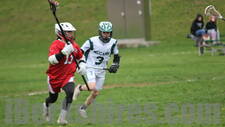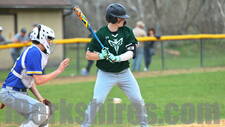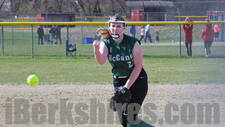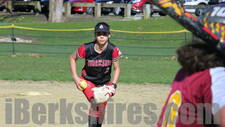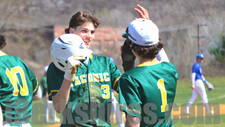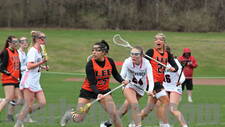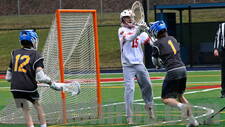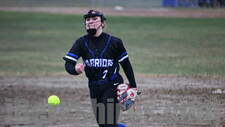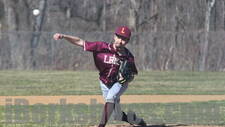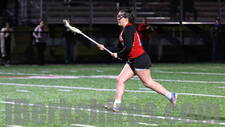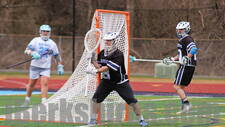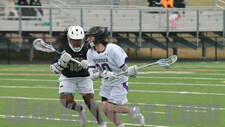| Friday, April 19, 2024 04:19pm |
| Send news, tips, press releases and questions to info@iBerkshires.com |

|
| SIGN IN | REGISTER NOW |
Traditions
The wedding ring itself is one of the most obvious holdouts from centuries past. Its placement on what has since become known as, sure enough, the "ring finger," stems from the belief that the finger contained a vein leading directly to the heart. Our understanding of biology may have improved (for proof, compare the shape of a traditional heart to its actual appearance), but the ring placement remains the same, and is mirrored by most cultures. But what of the actual ring? Its origin is said to be Egyptian; the ring was a replaceable loop of vine or herb worn by the betrothed. In later centuries, the Romans created iron loops that closely resemble wedding bands of today. The use of metal by the Romans signified the strength of the couple's bond. The British further upgraded the band by forging the ring out of gold, which symbolically told of the beauty and purity of those who wore it. The origin of the white wedding gown has a few variations in its origin. The ancient Romans thought the color signified joy. In later centuries, the color was said to represent purity. Yet the early Saxons saw poorer brides wearing a simple white robe; this signified her lack of earthly possessions and relieved the prospective husband of any of the wife's previous debts. In current times, white once again represents the joyous atmosphere of the occasion. (As society changes, so do its customs; a white dress worn to represent purity is seen as largely impractical in today's world of second marriages and, ahem, pre-wedded bliss. The attire of the wedding party also has its roots in times long gone. Guests at weddings dating back to the dark ages would dress in similar attire to confuse evil spirits. This coordination of clothing, while once meant to protect the bride and groom from party-pooping demons intent on sabotaging the marriage right from the start, is carried over today in the dresses of the bridesmaids and the tuxes of the groomsmen. A curious holdover from times past is the bridal veil. Since women were bartered for in ancient Greece and Rome, they remained fully covered and were only unveiled by the husband at the time of the wedding. This signified the man's dominance in the union and also asserted his sole right to see the woman in an unveiled state. Similar European traditions saw the prospective husband and the bride's father making wedding arrangements, with the groom receiving a literal unveiling of his new prize at the time of the marriage. As you might imagine, the one piece of wedding clothing with the sauciest history is the garter. Believe it or not, in medieval times, the guests of the wedding party would accompany the bride and groom back to the bedroom! This tradition became rowdier and rowdier until it got to the point where the guests would eagerly lend a hand to the new couple by helping undress the bride! A superstition of the time saw guests stealing the bride's stockings in order to hurl them back at the couple; whoever managed to throw the stocking closest to the bride's nose would be next to marry. Couples soon began tiring of the uninvited audiences in their bedroom chambers and hurried the proceedings along by offering the bride's stocking to the ravenous group. This tradition has certainly mellowed throughout the centuries, to the point where the bride now wears an extra garter, to the delight still-salacious and still-superstitious crowd. The wedding cake comes to us through a series of origins. The ancient Romans broke loaves of bread over the bride's head. A large number of resultant crumbs signified a large family for the new couple. These crumbs were seen as good luck. The early Britons offered baskets of crackers for guests to take home; this evolved into the practice of carting home a piece of the wedding cake and putting it under one's pillow. These loaves of bread and offerings of crackers eventually evolved into larger cakes to accommodate greater number of guests. From the Middle Ages, when pastries were decorated in the shapes of an animal or castle, through the following centuries, the decorations became more elaborate, growing into the colossal beasts we roll out at today's ceremonies. The floral arrangements we see at today's weddings stem from the practice of adorning brides with a multitude of herbs; this was intended to ward off evil spirits. The practice of wearing herbs transitioned into that of modeling a wreath of flowers; this was initiated by wealthy families and later spread to commoners. Far from today's typical week or two of fun in the sun, the honeymoon's origins were more literal in their interpretation of the word. The bride and groom would spend a "moon" (one month) drinking a mix of mead and honey, known as metheglen. Any man who could keep his bride for one month was entitled to her forever; it was thought that keeping her docile during this period would increase the groom's likelihood of success. Thus, the immediate post-marriage period was one in which the main activity was the imbibing of a potent brew in honor of the union of the wedded couple. Looks like some things never change. |
Pittsfield Woman Dies After Being Rescued From... Remains of Woman Missing Since March Found in NYS Suspect in High-Speed Adams Chase Arrested Pittsfield Firefighters Rescue Woman From Burning Home Greylock Glen Outdoor Center 90% Complete Man Charged With Child Porn Posts $100K Bail North Adams to Begin Study of Veterans Memorial Bridge... MassWildlife: Black bears are active and searching for... Adams-Cheshire Teacher Nominated for Outstanding...
|

